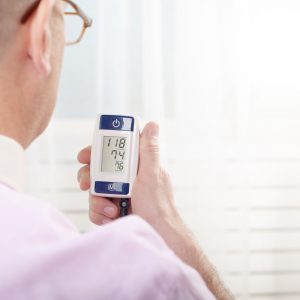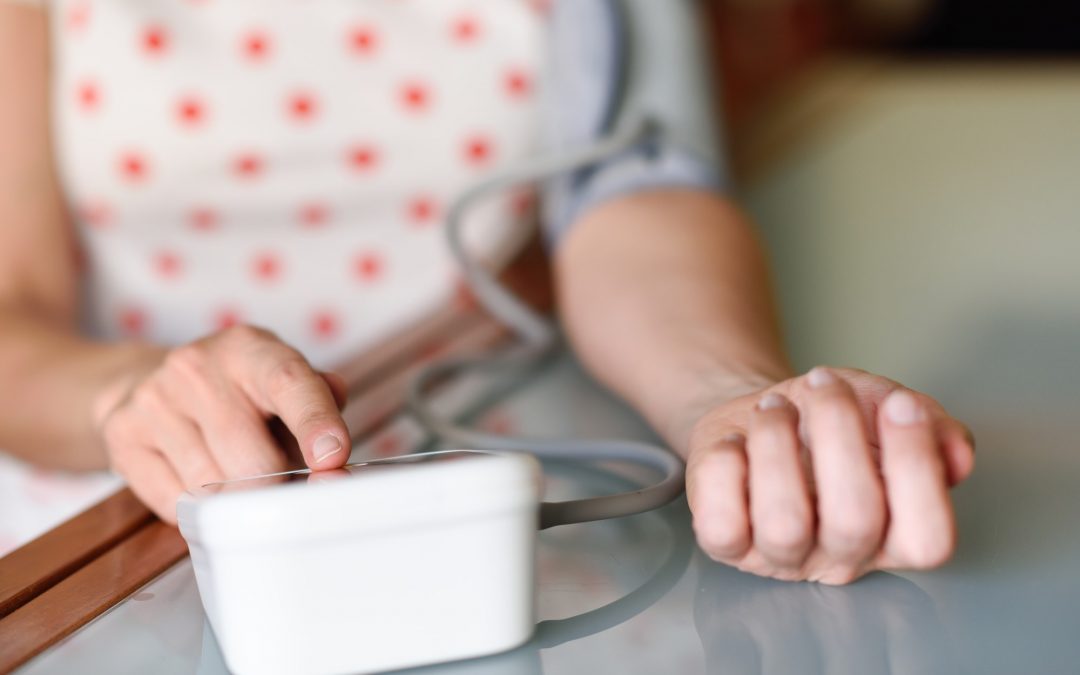To control and manage your high blood pressure, you need to understand blood pressure readings and what they mean.
You can buy a blood pressure monitor and use it to measure your blood pressure at home.
However, it’s important to check with your doctor if your readings are especially low or high to confirm the measurement is correct (and to take the appropriate measures if necessary).
What Your Blood Pressure Numbers Mean

Blood pressure readings consist of two numbers: systolic and diastolic.
The upper number in a blood pressure monitor is the systolic blood pressure reading.
It indicates how much pressure the blood is applying against the artery walls as the heartbeats.
The lower number in a blood pressure monitor is the diastolic blood pressure reading.
It indicates how much pressure the blood is applying against the artery walls as the heart rests between beats.
Which Is More Important – Systolic or Diastolic?
If you’re over 50, systolic blood pressure will get more attention as an indicator of cardiovascular disease.
As people age, systolic blood pressure naturally increases due to a long-term buildup of plaque, increasing stiffness of large arteries, and increasing incidence of cardiac and vascular disease.
Both systolic and diastolic readings can diagnose high blood pressure.
In people ages 40 to 89, the risk of death from stroke and ischemic heart disease double with every 10 mm Hg diastolic increase and 20 mm Hg systolic increase.
Understanding mm Hg Readings
The use of millimeters of mercury, or mm Hg, is because the first accurate pressure gauges used mercury.
Mercury still serves as the standard unit of measurement for pressure.
Blood Pressure Ranges

The American Heart Association has provided the following blood pressure measurements and if they’re healthy or unhealthy:
- Normal Blood Pressure: Less than 120 systolic mm Hg, less than 80 diastolic mm Hg.
- Elevated Blood Pressure: Between 120 and 129 systolic mm Hg, less than 80 diastolic mm Hg.
- High Blood Pressure (Hypertension) Stage 1: Between 130-139 systolic mm Hg, between 80-89 diastolic mm Hg.
- High Blood Pressure (Hypertension) Stage 2: 140 or higher systolic mm Hg, 90 or higher diastolic mm Hg.
- Hypertensive Crisis: Higher than 180 systolic mm Hg, higher than 120 diastolic mm Hg. Contact your doctor immediately if you’re in hypertensive crisis.
Understanding Blood Pressure Ranges
The following are descriptions of the 5 blood pressure ranges provided by the American Heart Association.
Normal Blood Pressure
If your reading is less than 120/80 mm Hg, then continue (or adapt) heart-healthy habits such as exercising and eating a balanced diet to stay in this normal range.
Elevated Blood Pressure

If your reading falls between 120-129 systolic and less than 80 mm Hg diastolic, it means you have elevated blood pressure and have to take control of your condition; otherwise, you’re likely to develop high blood pressure.
Hypertension Stage 1
If your reading falls between 130-139 systolic or 80-89 mm Hg diastolic, it means you’re in hypertension stage 1.
At this stage, you must consult your doctor so they can prescribe any lifestyle changes and blood pressure medications (depending on your risk of cardiovascular disease).
Hypertension Stage 2
If your reading consistently reads 140/90 mm Hg or higher, it means you’re in hypertension stage 2.
At this stage, your doctor will prescribe lifestyle changes and a combination of blood pressure medications.
Hypertensive Crisis

If your reading suddenly exceeds 180/120 mm Hg, you might be experiencing a hypertensive crisis.
In this case, wait about five minutes and measure your blood pressure again. Contact your doctor immediately if your readings are still high.
In cases where your blood pressure reads higher than 180/120 mm Hg and you start experiencing physical symptoms such as difficulty speaking, back pain, chest pain, change in vision, shortness of breath, and/or numbness and weakness, call 911 immediately – don’t wait to see if your blood pressure comes down.

